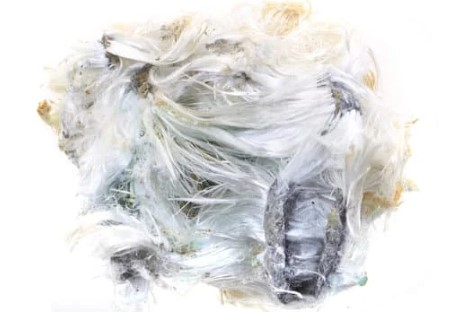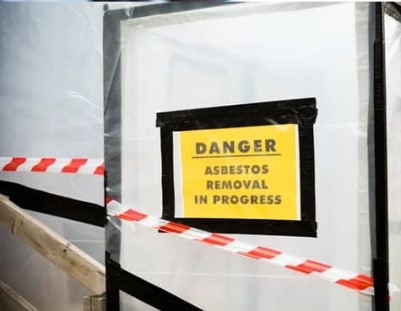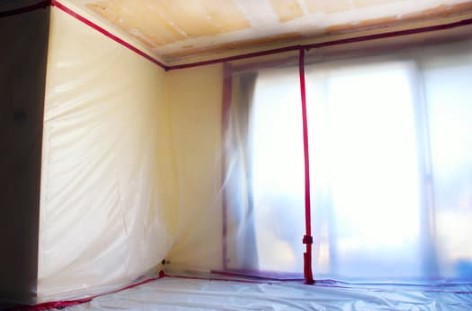Asbestos in Homes: Uses, Removal Process, and Experts
Asbestos in Homes: Uses, Removal Process, and Experts
What is Asbestos?

Asbestos is a naturally occurring mineral fiber composed of long, thin crystals. It is made up of six different minerals. Chrysotile is the most common type of asbestos and accounts for approximately 90% of asbestos used globally. Amphibole asbestos includes minerals such as amosite, crocidolite, tremolite, anthophyllite, and actinolite. These minerals have strong, heat-resistant properties and are resistant to chemical corrosion, making asbestos a versatile material for various industrial and construction applications.
Asbestos Has Serious Health Risks
Asbestos was commonly used in homes for various applications due to its heat resistance and durability. However, extensive research has linked asbestos exposure to serious health risks, including lung diseases and cancer. It is crucial to understand the ways and places where asbestos was used in homes and the proper removal process to ensure a safe living environment. Due to the health risks associated with asbestos exposure, its use has been heavily regulated or banned in many countries.
Uses of Asbestos in Homes
1. Insulation: Asbestos was widely used as insulation material in homes, particularly in attics, walls, pipes, and heating systems. It provided excellent heat resistance and insulation properties, making it a popular choice for thermal insulation.
2. Roofing: Asbestos-containing materials were used in roofing products such as shingles, tiles, and cement sheets. These materials were durable, fire-resistant, and provided effective protection against weather elements.
3. Flooring: Vinyl floor tiles, linoleum, and adhesives used in flooring often contained asbestos fibers. It enhanced the durability and strength of the flooring materials.
4. Pipes and Ducts: Asbestos insulation was commonly used to cover pipes and ducts in older homes. It prevented heat loss and ensured efficient energy distribution.
5. Textured Surfaces: Asbestos was frequently used in textured paints, coatings, and plaster compounds applied to walls and ceilings. It provided texture and increased fire resistance.
6. Ceilings: Ceiling tiles were a common application for asbestos in homes and commercial buildings. Asbestos fibers were incorporated into the tiles to enhance their strength, durability, and fire resistance. To determine if ceiling tiles contain asbestos, it is important to consult a professional asbestos testing service.
7. Siding: Asbestos was commonly used in siding for homes due to its durability and fire-resistant properties. It was incorporated into siding materials such as cement, shingles, and panels to enhance their strength and resistance to weather elements. Asbestos-containing siding provided homeowners with a long-lasting and low-maintenance option. If the siding becomes damaged or deteriorates, it can release asbestos fibers into the air and pose health risks.
Removal Process and Experts

Proper removal of asbestos is crucial to minimize the risk of exposure. It is recommended to hire trained professionals for asbestos removal to ensure safe and effective procedures. The removal process generally involves the following steps:
1. Assessment: Trained asbestos professionals conduct a thorough inspection to identify asbestos-containing materials (ACMs) in the home. Samples may be collected and sent to a certified laboratory for analysis.
2. Planning: A comprehensive plan is developed, outlining the removal process, safety measures, and necessary equipment. The plan ensures minimal disturbance to asbestos fibers and prevents their release into the air.
3. Containment: The affected area is isolated using plastic sheeting and negative pressure units to prevent the spread of asbestos fibers. The containment area is equipped with proper ventilation and filtration systems.

4. Removal: Trained experts carefully remove the identified ACMs following strict safety protocols. Specialized tools and techniques are used to minimize the release of asbestos fibers.
5. Disposal: All asbestos-containing materials are sealed in leak-tight containers and labeled properly. They are then transported to authorized waste disposal sites for safe and legal disposal.
Experts Involved in Asbestos Removal

Several professionals play a crucial role in the asbestos removal process:
1. Asbestos Abatement Contractors: These contractors specialize in identifying and safely removing asbestos from residential and commercial buildings. They have the necessary expertise, equipment, and certifications to handle asbestos removal projects.
2. Industrial Hygienists: These professionals assess and monitor asbestos levels in the air during removal to ensure safety and compliance with regulations. They may conduct air sampling and testing to verify the effectiveness of the removal process.
3. Environmental Consultants: Environmental consultants provide guidance on managing asbestos-related risks. They assist in developing comprehensive management plans, conducting risk assessments, and ensuring compliance with local regulations.
4. Certified Laboratories: These laboratories analyze samples collected from homes to determine the presence and concentration of asbestos fibers. Their analysis helps in accurate identification and assessment of asbestos-containing materials.
What if My Home Has Asbestos?
If asbestos-containing materials in your home are undisturbed and in good condition, they are less likely to release asbestos fibers into the air, minimizing immediate harm. However, it's important to understand that asbestos fibers can still become airborne over time due to natural deterioration or external factors like vibrations or renovation work. Prolonged exposure to asbestos fibers, even at low levels, can pose serious health risks, including lung diseases and cancer. Therefore, it is recommended to consult with professionals for proper assessment and management of asbestos in your home, regardless of whether you plan to disturb it or not.
Conclusion
Asbestos, once widely used in homes for its desirable properties, poses significant health risks when its fibers are released into the air and inhaled. Understanding the uses of asbestos in homes and the proper removal process is essential for creating a safe living environment. Hiring trained professionals and involving experts in asbestos removal ensures that the process is conducted safely and effectively, minimizing the risks associated with asbestos exposure.
As a REALTOR® in the Triad area, I Can Help
As you navigate the Piedmont Triad, North Carolina real estate market, I am here to guide you through every step of the home buying process. I can help point out things to look for in a home, like things that may contain asbestos. From assisting you in your home search and connecting you with reputable lenders, to handling the contract paperwork and negotiating with sellers, I am committed to ensuring a smooth and successful transaction. I will also help schedule inspections and coordinate with an attorney to finalize the closing, ensuring a seamless experience from start to finish.
Let me be your trusted partner to guide you through the real estate market in the most efficient and stress-free manner possible. With careful research and guidance, you can make confident decisions and find your ideal home or investment property in the Piedmont Triad area of North Carolina.
As a licensed and experienced REALTOR® in the Triad NC with both the Accredited Buyer's Representative (ABR) and Seller Representative Specialist (SRS) designations from the National Association of REALTORS®, I bring a wealth of knowledge and expertise to assist you in your home buying or selling process. Whether you are buying or selling, you can rely on my professionalism and commitment to deliver exceptional service and results. I look forward to the opportunity to work with you.
Categories
Recent Posts











Teresa Davis
REALTOR® and Licensed Loan Originator | License ID: 308937 / NMLS# 2597433

